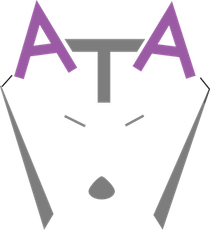Most of us have some understanding of the general need businesses have for common financial statements – the profit and loss statement (or income statement), the balance sheet, and the statement of cash flows.
While any number of uses exist for each of these statements, it can be difficult to understand the common use cases and how to maximize their potential.
Below, we outline some information on three main financial statements (the obvious stuff), how they can be best utilized strategically (how you can activate financial statements strategically), and the main types of events that might trigger a need for external parties to take a look at your statements (reasons you will want to have quality system to your financial statement preparation for potential business partners to assess).
Profit and Loss Statement (P&L)
Purpose
Providing a lens into the profitability of the business and the cost of the components that drive your business operations. Set up properly, it will account for the important streams, sectors and divisions in your business and allow for an actionable, digestible transparency in the results that are displayed.
How It Can Provide Internal Value
Understanding how your revenue and expenses sum up in total can be where this exercise ends, but taking the next step to think through your P&L and what you want it to communicate to you is where the real value lies.
By properly setting up your bookkeeping organization structure (link to other article here), your financial information will illuminate the key success drivers for your business for easy access right on the face of the P&L statement.
Common External Need Cases:
- Investors
- Creditors and Lenders
- Selling Your Business
Balance Sheet
Purpose
Providing a lens into what the company owes, what they are owed, and how the business finances its operations (i.e. debt and equity levels). It is also closely tied to the P&L, offering additional context and detail behind the profitability picture and how the business manages its accounts receivable (AR) and accounts payable (AP).
How It Can Provide Internal Value
Similar to the P&L, the balance sheet’s usefulness benefits immensely from a bookkeeping system that accounts for the nature of how your revenue and cost of sales come about.
For example, some businesses collect cash immediately upon sale of their goods, while others operate wholly on credit terms based on the nature of the business they conduct. Simple in concept, but properly placing accounting guidelines around these parameters is absolutely critical to creating a balance sheet that can be a useful gauge of your financial position at any point in time.
Common External Need Cases:
- Creditors and lenders will want to understand the nature and accuracy of the AR & AP reported on your balance sheet.
- Potential investors (and those invested) will want to see a balance sheet that gives them context into the overall financial health and cash position of your business.
- Audits of businesses often place a focus on your balance sheet to assess the accuracy of your financial statements as a whole.
Statement of Cash Flows
Purpose
To show how the cash actually moves through the business and for which activities that cash movement supports. As both the P&L and balance sheet can both contain concepts that are independent of the receipt or payment of cash, the cash flow statement can fill in the gaps as to how cash is utilized to leverage operations and support the business’s overall health.
How It Can Provide Internal Value
There’s no better source for an overall business view of how your cash strategy is playing out and how it could be tweaked.
Every business has to make choices in how to collect and spend the cash their business collects, and those decisions are critical to the overall success and longevity of the business.
The cash flow statement will summarize those decisions at a detailed level and allow for an ability to make decisions on how things can be changed to generate a better cash position and overall use of cash in the future.
Common External Need Cases
- If you are looking to sell at some point in the future, potential buyers of your business to ensure that your cash flows support the profitability of your business in a way that is sustainable.
- Investors will want to understand how cash decisions affect the business and ability to sustain its operations


